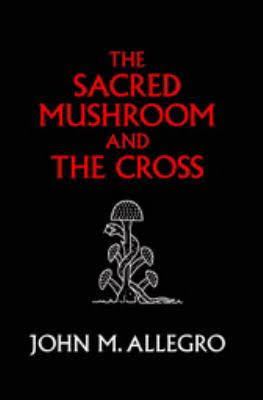8 /10 1 Votes
Publication date 1970 Pages 253 (third edition) Originally published 1970 Original language English Country United Kingdom | 4/5 Goodreads Media type print (hardback) ISBN 0-349-10065-9 Page count 253 (third edition) | |||||||||||||||||||||||||||||||||
 | ||||||||||||||||||||||||||||||||||
Publisher Hodder and Stoughton Ltd Religion books Soma: divine mushroo, Magic Mushrooms in Religio, Failed God, The road to Eleusis, The apples of Apollo | ||||||||||||||||||||||||||||||||||
The Sacred Mushroom and the Cross: A Study of the Nature and Origins of Christianity Within the Fertility Cults of the Ancient Near East is a 1970 book about the linguistics of early Christianity and fertility cults in the Ancient Near East. It was written by John Marco Allegro (1923–1988).
Contents
Theories
The book relates the development of language to the development of myths, religions, and cultic practices in world cultures. Allegro believed he could prove, through etymology, that the roots of Christianity, and many other religions, lay in fertility cults, and that cult practices, such as ingesting visionary plants to perceive the mind of God, persisted into the early Christian era, and to some unspecified extent into the 13th century with reoccurrences in the 18th century and mid-20th century, as he interprets the fresco of the Plaincourault Chapel to be an accurate depiction of the ritual ingestion of Amanita muscaria as the Eucharist. Allegro argued that Jesus never existed as a historical figure and was a mythological creation of early Christians under the influence of psychoactive mushroom extracts such as psilocybin.
His claims have often been subject to ridicule and scorn due to Allegro's unconventional theory. As Time magazine put it in an article headed "Jesus as mushroom",
To some biblical scholars in Britain, the new book looked like the psychedelic ravings of a hippie cultist. To others, it was merely an outlandish hoax. One described it as reading "like a Semitic philologist's erotic nightmare."
Reaction
The book has been described as "notorious" and as "one of the strangest books ever published on the subject of religion and pharmacology". There was a media frenzy when it was published at the dawn of the 1970s. This caused the publisher to apologize for issuing it and forced Allegro's resignation from his university position. Judith Anne Brown suggested that the book was "difficult to read and difficult to summarize, because he follows clues that criss-cross different cultures and lead into many-layered webs of association." Mark Hall writes that Allegro suggested the scrolls all but proved that a historical Jesus never existed. Philip Jenkins writes that Allegro was an eccentric scholar who relied on texts that did not exist in quite the form he was citing them, and calls the Sacred Mushroom and the Cross "possibly the single most ludicrous book on Jesus scholarship by a qualified academic."
Reconsideration
Some studies of Allegro's work have given new purported evidence and led to calls for his theories to be re-evaluated by the mainstream. In November 2009 The Sacred Mushroom and the Cross was reprinted in a 40th anniversary edition with 30-page addendum by Prof. Carl A. P. Ruck of Boston University. A more articulate exposition of Allegro's insights into early Christianity and his discoveries studying the Dead Sea Scrolls was published in his 1979 book The Dead Sea Scrolls and the Christian Myth.
The work of Allegro also gained recognition and consideration by such late proponents of experiential psychedelia through pharmacological interaction as Terence McKenna, who cited Allegro's claims of certain psychoactive fungi analogizing the Eucharist, spoken in a live lecture in the 1990s.
